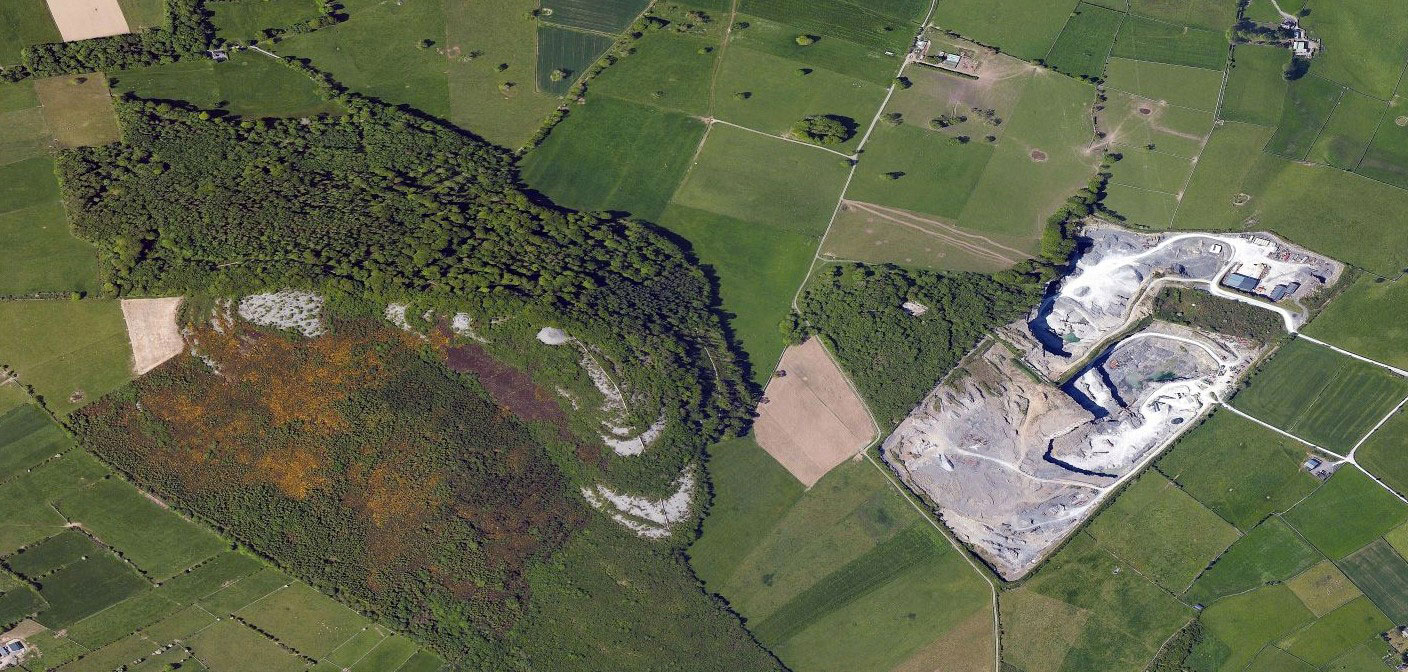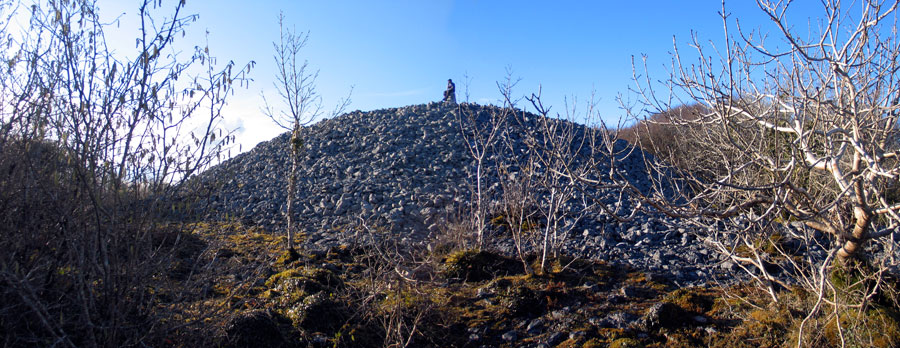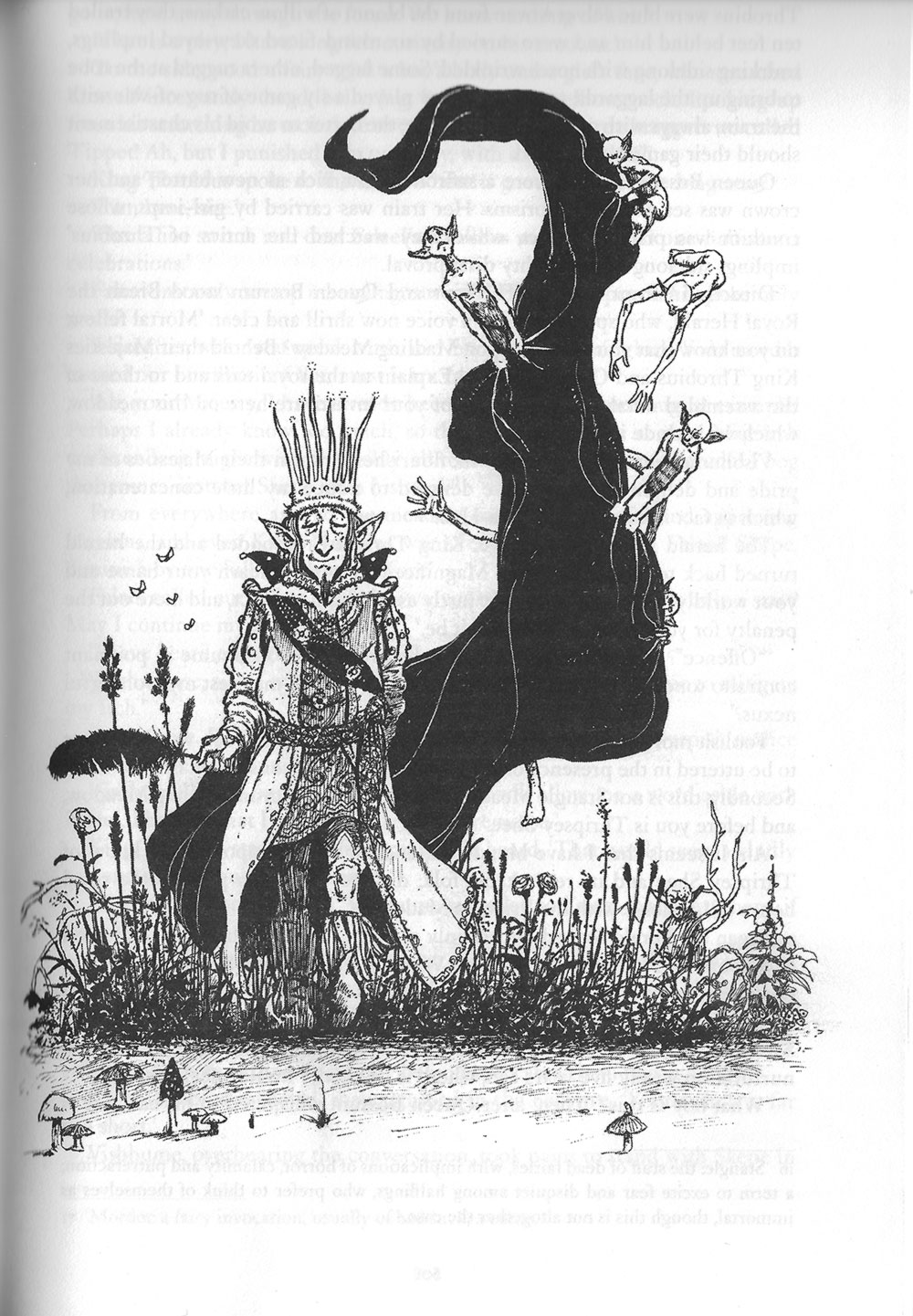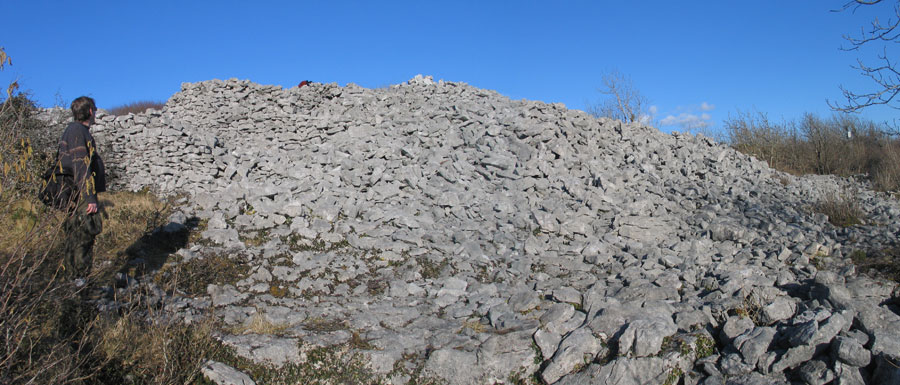Knockma
'Knock Ma, which you see over there, is said to contain excavated passages and a palace where the fairies live, and with them the people they have taken. And from the inside of the hill there is believed to be an entrance to an underground world. It is a common opinion that after consumptives die they are there with the fairies in good health. The wasted body is not taken into the hill, for it is usually regarded as not the body of the deceased but rather as that of a changeling, the general belief being that the real body and the soul are carried off together, and those of an old person from Fairyland substituted. The old person left soon declines and dies.'
Testimony of a local priest in 1911, Fairy Faith in Celtic Countries.
Knockma is a little known site west of Tuam and east of Headford at Castlehacket in County Galway. Knockma is the largest of a small series of limestone hills running east - west, each of which was once topped with a neolithic cairn. Several are now gone - destroyed by 'progress', but a large monument remains on the east side of the summit of Knockma.
This is called Ceasair's Cairn, and is said to be the burial place of Ceasair, the first women to set foot in Ireland. She is also credited with being a granddaughter of Noah, and introducing sheep to Ireland; Ceasair is said to be interred within the great unopened cairn which bears her name. It is also said to be another resting place of Queen Maeve, the legendary queen of Connaught, though Maeve's Grave on Knocknarea in County Sligo has a much stronger claim to be her final resting place.
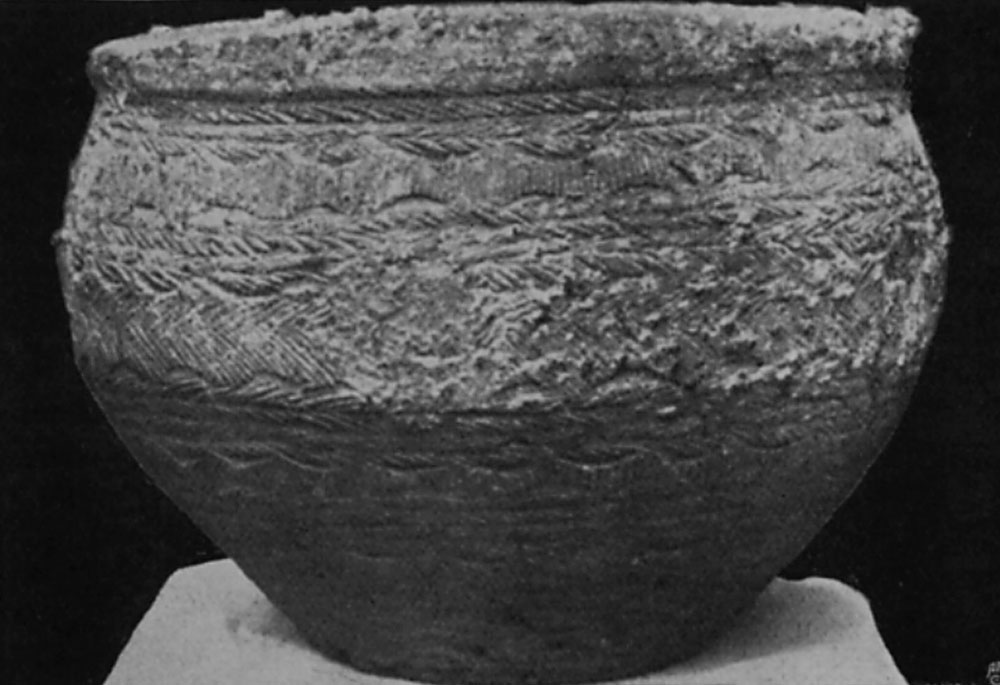
Nearby is another monument called Fionnabar's Castle, a seeming cashel which is said to be another cairn which was re-modelled by a local landlord. This is said to be the home of Fionnabar, the King of the Fairies of Connaught.
Sir William Wilde, father of Oscar describes Knockma thus:
Cnoc Meadha, or Knockma, the great hill, so conspicuous in the landscape, is about five miles to the west of Tuam, in the barony of Clare and county of Galway; its northern slope is occupied by the woods and cultivated grounds of Castlehacket; and on its summit stands the great carn within which tradition and ancient history say Ceasair, one of the earliest colonists of Ireland, was interred.Tradition, as well as popular superstition, has thrown over it the investiture of fairy legend beyond all other places in the country; for here Finnveara, the Oberon of Irish sylvan mythology, holds his court.
From this point may be obtained one of the grandest panoramic views in Ireland - the great plain stretching beneath and round Cnoc Rua; the beautiful abbey of Cnoc Muaidhe; the towers of Athenry, the Ford of the King; Tuaim of St. Iarlaith; the Round Tower of Cill Beanáin; the ruined keeps of the De Burgos; the ships riding in the Bay of Galway; the Slieve Bloom and Clare mountains; the blue island-studded waters of Loch Coirib; and, in the far western background, the Conamara Alps, with their clear-cut edges, and their sides momentarily varying in tints from the marvellous atmospheric effects of that region stretching round by the Partraí range to the lofty peak of Cruach Pádraic; and in the extreme north-western distance the bulky form of Néifin, and even some of the Achaill mountains skirting Clew Bay."
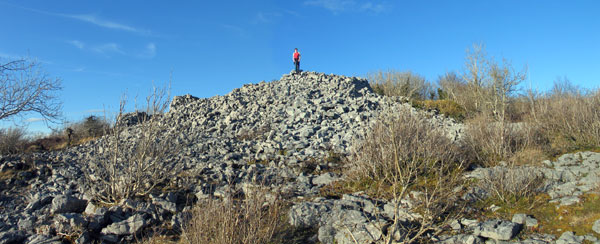
Knockma is about 8 kilometers west of Tuam, just past the village of Belclare. Parking is by the ruined tower house called Castlehacket. There is now a public nature trail up the hill, with paths. A cottage, recently renovated, at the foot of the hill, is the birth place of traditional musicians Delores and Sean Keane. Parking at the cottage, it is a good 30 minute climb to the top of the hill.

